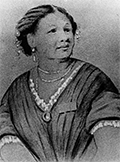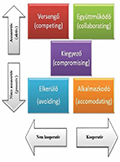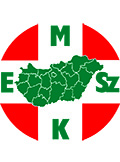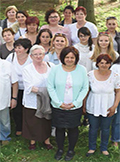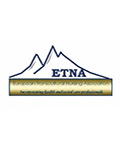The eLitMed.hu medical portal uses computer cookies for convenient operation. Detailed information can be found in the Cookie-policy.
Journal of Nursing Theory and Practice - 2017;30(04)
Content
[Workplace conflicts in health care]
[Health care requires the cooperation of many professions and often comes with stressful situations. Therefore conflicts might develop among health care providers more frequently. Moreover the staff is interdependent, which might be another source of conflicts. This phenomenon not only affects the crossing parties, but also triggers emotional changes in the individuals (anger, stress and negative emotions) and has long term consequences, too (medical malpractice, fluctuation, sick leaves, discontent patients and bad reputation of the institution). All these can have financial effects, e.g. law costs. The present publication discusses the different definitions of conflicts and explains their reasons and types. This article has a special focus on health-care team conflicts, their consequences and the possible management methods.]
[How to break medical bad news? The importance of the course for breaking medical bad news and an evaluation of his curriculum]
[Breaking bad news to patients is a difficult task for health care professionals and there are many unsolved issues in this area. There are several ways of delivering bad news and the quality of the communication could affect the whole life of the patient. However the wrongly delivered bit of bad news could not only cause a crisis for the recipient but will create a stressful situation for the communicator. The course created at the University of Pécs, Faculty of Health Sciences is specified to the delivery of bad news with modern communication methods, which uses video feedback method to analyse and develop the participants’ communicational attitude, thus providing potent aid for the acquisition of the proper communicational techniques, from which both the patient and the care giver can profit.]
[The role of a weekly geriatric exercise programme in successful aging]
[Objective: The aim of this retrospective study was to examine the effects of a weekly held group multicomponent exercise programme (consisting of aerobic, strengthening, flexibiliy, and balance exercises) on the functional abilities (muscle strength, walking speed, and static balance) among elderly people. Methods: Thirty eight older people were divided into two groups: the active group for those elderly who took part is the training for at least 2 years, and the inactive group for those who did not take part in the training before. The global muscle strength in the lower extremity was measured with the 5 sit-to-tand test, the walking speed was measured with the 4 meters walking test. To examine the static balance, we used the one-leg stance test. To determine the subjective well-being, a Visual Analog Scale was used. Results: The Active group was significantly better in 5 sit-to-tand test (t(36)=2,602; p=0,013; Cohen’d=0,99), and marginally significant difference was found in the 4 meters walking test (t(36)= 1,769; p=0,085; Cohen’d=0,66) to the benefit of the Active group. In the term of static balance, we could not find significant difference. Conclusions: This programme for elderly people is effective to improve the global lower limb muscle strenght and walking speed of the elderly, but not very effective in improving static balance.]
[The importance of serum albumin level in patients with chronic renal disease on maintenance dialysis]
[The aim of the study: Evaluation of changes in serum albumin levels and their effects on mortality in chronic haemodialyzed (HD) population. Material and Methods: We analysed the serum albumin values and survival in 253 HD patients, in a retrospective observational study. Data were analyzed using Spearman-correlation, Cox-modell, endpoint analysis and Kaplan-meier analysis. Results: We did not find any significant correlation between serum albumin levels and gender or basic diseases, but the median serum albumin level was lower in patients with ages 65 years or older than in younger ones, and had decreased until observational period (5.4±3.0 years). Lower the serum albumin level the risk of mortality was higher (if the serum albumin level was <35 g/L versus >40 g/L), the HR was 5.69. Conclusions: The serum albumin level is a main indicator of the nutrition in dialyzed patients, but the target level would be different in older and younger patients. The serious malnutrition (lower serum albumin level) increases the risk of mortality in haemodialyzed patients.]
[Milestone in the Development of the Primary Health Care]
[All health care systems in Europe face similar challenges. In Hungary the most important one is the emigration of health system workers and the increasing demand for care in ageing population. Key areas of the development of primary health care are prevention, public health and health promotion. In The Primary Care Development Model Program the single-handed general practices comprised of one GP, one nurse and one health visitor who were teamed up and formed the GP’s cluster employing various other health professionals (including community nurses). In the last 4 years the new primary care system became a reality for 40,000 inhabitants of four disadvantaged micro-regions of Hungary. The health status of more than 20.000 adults and 8000 children were assessed between 2013 and 2017 in the Modell Programme that uncovered a number of hidden diseases.]
1.
Clinical Neuroscience
Is there any difference in mortality rates of atrial fibrillation detected before or after ischemic stroke?2.
Clinical Neuroscience
Factors influencing the level of stigma in Parkinson’s disease in western Turkey3.
Clinical Neuroscience
Neuropathic pain and mood disorders in earthquake survivors with peripheral nerve injuries4.
Journal of Nursing Theory and Practice
[Correlations of Sarcopenia, Frailty, Falls and Social Isolation – A Literature Review in the Light of Swedish Statistics]5.
Clinical Neuroscience
[Comparison of pain intensity measurements among patients with low-back pain]1.
Clinical Neuroscience Proceedings
[A Magyar Stroke Társaság XVIII. Kongresszusa és a Magyar Neuroszonológiai Társaság XV. Konferenciája. Absztraktfüzet]2.
3.
Journal of Nursing Theory and Practice
[A selection of the entries submitted to the literary contest "Honorable mission: the joys and challenges of our profession" ]4.
Journal of Nursing Theory and Practice
[End of Life and Palliative Care of Newborns in the Nursing Context]5.
Journal of Nursing Theory and Practice
[Aspects of Occupational Health Nursing for Incurable Patients ]